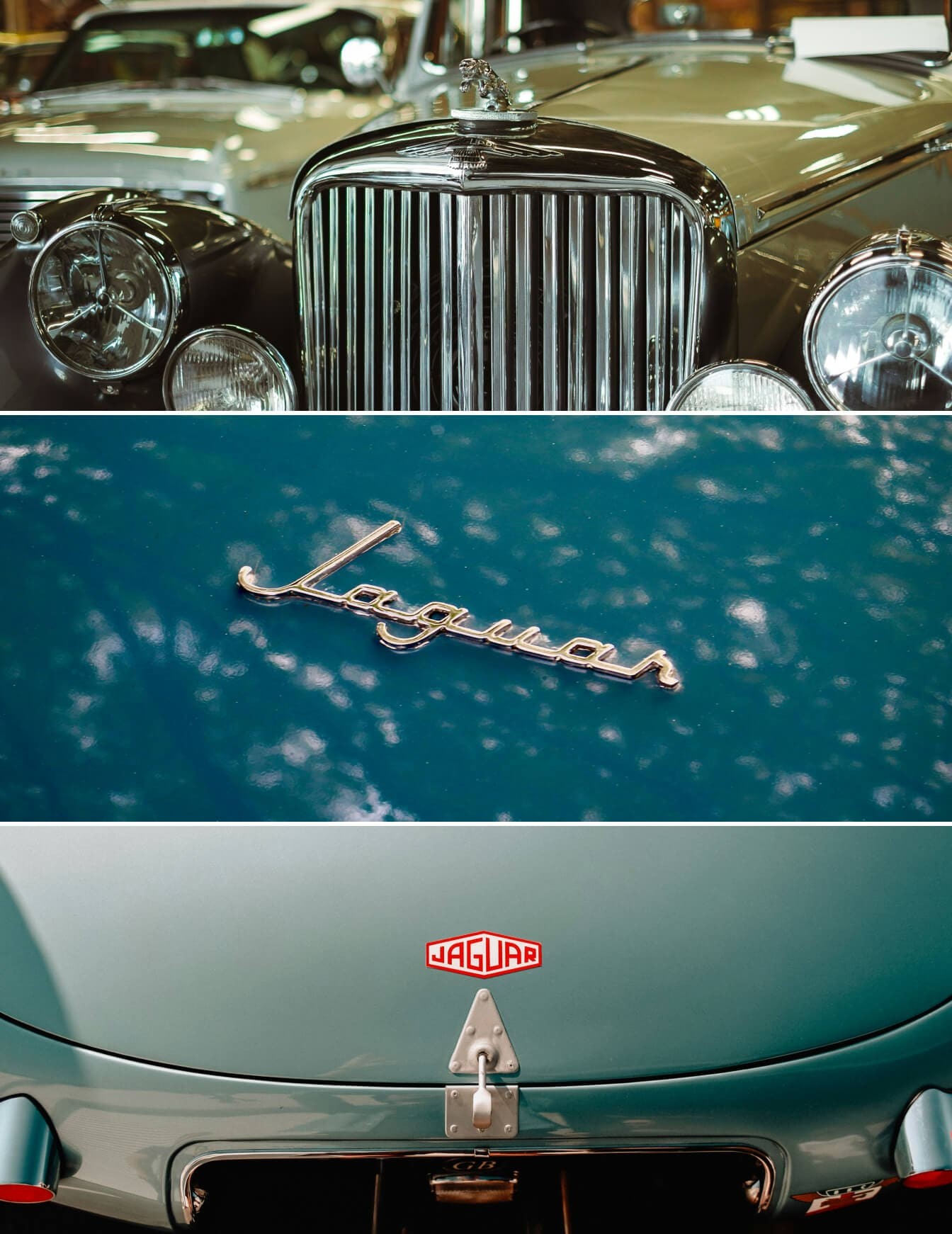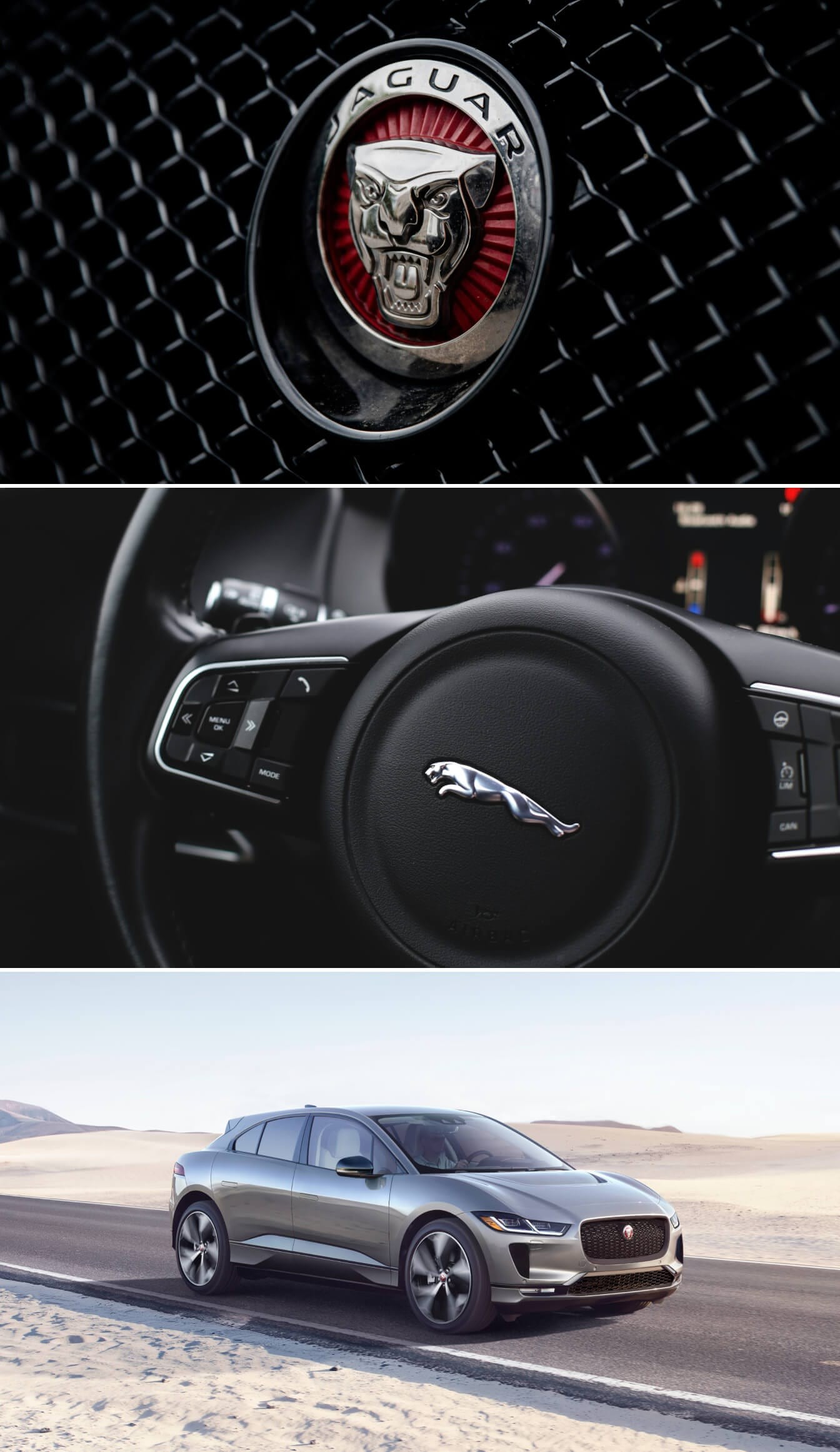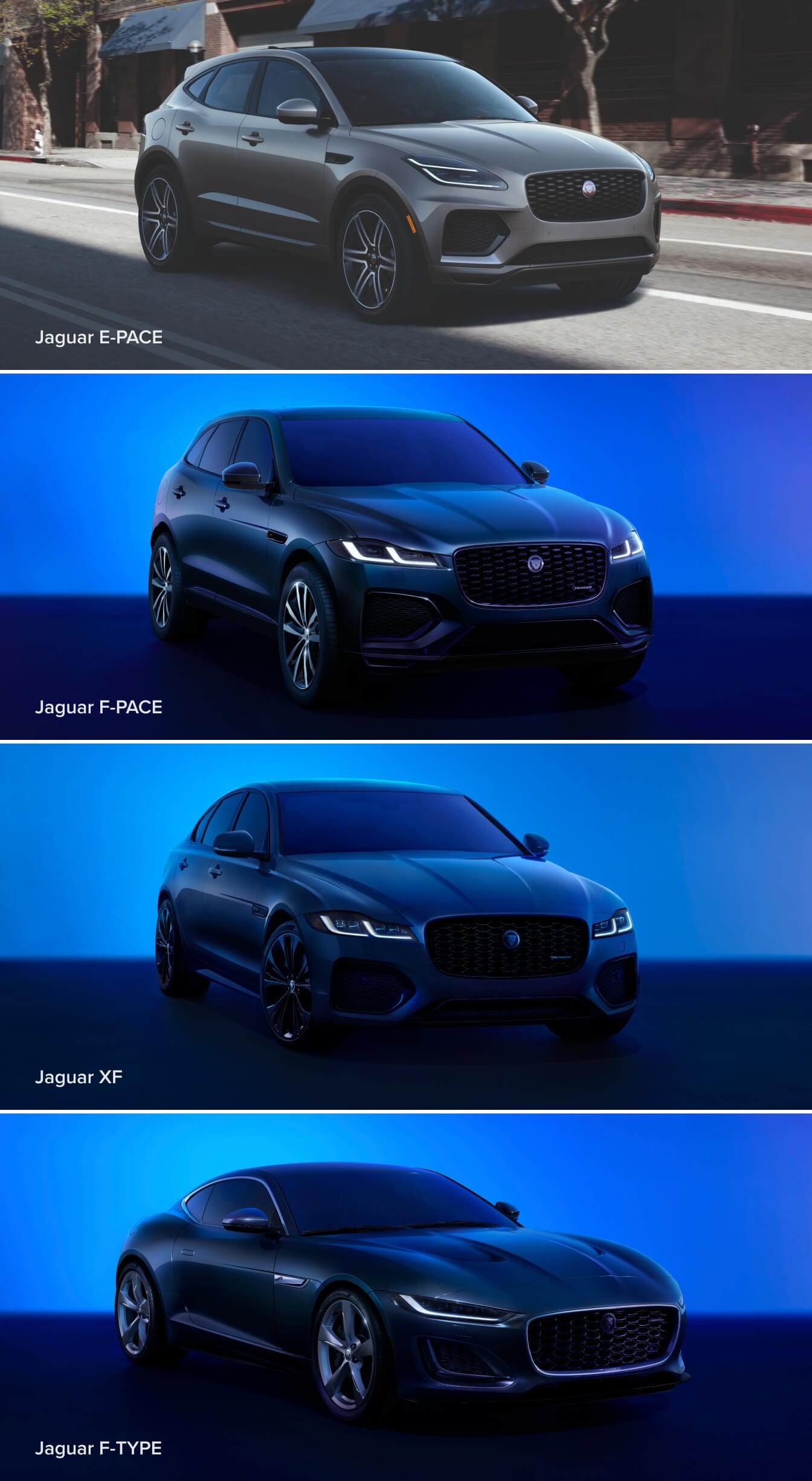Who Owns Jaguar Cars Now? Jaguar, a brand synonymous with luxury, performance, and British automotive heritage, has a captivating history filled with innovation and transformations. At CARS.EDU.VN, we understand your desire to explore the legacy of iconic brands. This article provides a comprehensive overview of Jaguar’s ownership evolution, manufacturing locations, and future direction, equipping you with valuable insights into the brand’s journey. Discover more about Jaguar’s ownership and its impact on luxury vehicles.
1. The Genesis of Jaguar: From Swallow Sidecar to Automotive Icon
The story of Jaguar begins not with cars, but with motorcycles.
- 1922: William Lyons and William Walmsley establish the Swallow Sidecar Company in Blackpool, England. Their initial focus was on manufacturing motorcycle sidecars, demonstrating early ingenuity and craftsmanship.
- Early Days: The company quickly gained a reputation for producing stylish and well-made sidecars. This early success laid the foundation for their future automotive endeavors.
- Expanding Horizons: The ambition of Lyons and Walmsley extended beyond sidecars. They envisioned creating complete vehicles that combined elegance with performance.
2. The Birth of Jaguar: A New Era of Automotive Excellence
The transition from sidecars to automobiles marked a pivotal moment in the company’s history.
- 1935: Under the new company name, SS Cars Limited, Lyons and Walmsley introduce the first Jaguar vehicle, the SS Jaguar. This marked the official entry of the Jaguar brand into the automotive market.
- The SS Jaguar: This initial model showcased the design philosophy that would define Jaguar for decades to come. It combined sleek aesthetics with a focus on performance and driving experience.
- Pre-War Innovation: Even before World War II, Jaguar was pushing boundaries in automotive design and engineering. The SS Jaguar set the stage for the iconic models that would follow.
3. Post-War Transformation: Renaming and Rebuilding
The aftermath of World War II brought significant changes and a fresh start for the company.
- 1945: SS Cars Limited is officially renamed Jaguar Cars Limited. This change signified a complete break from the past and a commitment to the Jaguar brand.
- Overcoming Adversity: Like many British companies, Jaguar faced challenges in the post-war era. However, the company persevered and continued to innovate.
- Focus on Design and Performance: Jaguar doubled down on its core values of elegant design and exhilarating performance. This strategy proved crucial to their success.
4. Mergers and Acquisitions: Navigating the Automotive Landscape
The latter half of the 20th century saw a series of mergers and acquisitions that reshaped the ownership structure of Jaguar.
- 1965: Jaguar Cars Limited becomes part of British Motor Holdings Limited, a conglomerate created to strengthen the British automotive industry.
- British Leyland Era: British Motor Holdings later rebrands as the British Leyland Motor Corporation. This period was marked by both opportunities and challenges for Jaguar.
- Navigating Complexities: Being part of a large corporation presented both benefits and drawbacks. Jaguar had to navigate the complexities of a large organization while maintaining its brand identity.
5. Independence Regained: A Brief Period of Autonomy
After years under the umbrella of British Leyland, Jaguar once again became an independent entity.
- 1984: Jaguar leaves British Leyland and becomes its own company again. This marked a return to greater autonomy and control over its own destiny.
- Renewed Focus: The newly independent Jaguar focused on refining its product lineup and strengthening its position in the luxury car market.
- Preparing for the Future: While independence offered opportunities, it also presented challenges in a rapidly changing global automotive industry.
6. Ford’s Acquisition: A New Chapter of Investment and Growth
The acquisition by Ford Motor Company brought significant investment and resources to the Jaguar brand.
- 1999: Ford Motor Company purchases Jaguar, aiming to expand its presence in the luxury car market.
- 注入投资: Ford invested heavily in modernizing Jaguar’s production facilities and developing new models.
- Quality Improvements: Many industry experts believe that Ford’s ownership led to significant improvements in the quality and reliability of Jaguar vehicles.
7. Tata Motors Takes the Reins: A Global Perspective
The current ownership of Jaguar by Tata Motors has ushered in a new era of global expansion and innovation.
- 2008: Tata Motors acquires the Land Rover and Jaguar brands from Ford, marking a significant step for the Indian automotive giant.
- Global Reach: Tata Motors brought a global perspective and access to new markets, helping Jaguar expand its reach beyond traditional strongholds.
- Continued Investment: Tata has continued to invest in Jaguar, supporting the development of new models and technologies.
8. Jaguar Land Rover: A Synergistic Partnership
Under Tata’s ownership, Jaguar and Land Rover have been integrated into a single entity, creating synergies and efficiencies.
- 2013: Jaguar Land Rover Limited is created under the Tata Motors umbrella. This formalized the integration of the two iconic British brands.
- Shared Technologies: The partnership allows for the sharing of technologies and platforms, leading to more efficient development processes.
- Distinct Identities: Despite the integration, Jaguar and Land Rover have maintained their distinct brand identities, appealing to different segments of the luxury car market.
9. Manufacturing Locations: From England to the World
Jaguar’s manufacturing footprint has expanded over the years, reflecting its global ambitions.
- Historical Roots: The earliest Jaguar vehicles were produced in Blackpool and Coventry, England. These locations remain important symbols of the brand’s heritage.
- Halewood Body & Assembly: This plant in Halewood, UK, is responsible for producing models like the Jaguar E-PACE.
- Solihull Manufacturing Plant: Located in Solihull, UK, this plant produces Jaguar Land Rover vehicles.
- Slovakia: Jaguar Land Rover also has a manufacturing facility in Nitra, Slovakia, further expanding its global production capacity.
- China: In addition to these European locations, Jaguar Land Rover has a manufacturing presence in China, catering to the growing demand for luxury vehicles in the Asian market.
10. The Future of Jaguar: Electric Transformation and Sustainable Mobility
Jaguar is committed to embracing electric mobility and shaping a sustainable future for the automotive industry.
- Electric Vision: Jaguar has announced its commitment to becoming an all-electric brand, phasing out gasoline-powered vehicles.
- Jaguar I-PACE: The Jaguar I-PACE is a testament to Jaguar’s electric capabilities, offering impressive performance and range.
- Sustainability Focus: Jaguar is investing in sustainable manufacturing practices and exploring new materials to reduce its environmental impact.
11. Exploring Jaguar’s Model Lineup: A Blend of Performance and Luxury
Jaguar offers a diverse range of models, each designed to deliver a unique blend of performance, luxury, and style.
- Jaguar F-PACE: The F-PACE is a performance SUV that combines practicality with Jaguar’s signature driving dynamics. It’s a popular choice for families who want a stylish and engaging SUV.
- Jaguar E-PACE: The E-PACE is a compact SUV that offers a blend of agility and everyday usability.
- Jaguar I-PACE: This all-electric SUV showcases Jaguar’s commitment to sustainable mobility. It offers impressive range and performance, making it a compelling option for EV enthusiasts.
- Jaguar XF: The XF is a luxury sedan that offers a refined driving experience and a host of advanced technologies.
- Jaguar F-TYPE: This sports car embodies Jaguar’s passion for performance and exhilarating driving dynamics. It’s available in both coupe and convertible body styles.
12. Jaguar’s Racing Heritage: A Legacy of Speed and Innovation
Jaguar has a rich history in motorsports, which has influenced the design and engineering of its road cars.
- Early Successes: Jaguar achieved early success in racing with models like the XK120 and C-Type. These victories helped establish the brand’s reputation for performance.
- Le Mans Dominance: The Jaguar D-Type was particularly successful at the 24 Hours of Le Mans, winning the race multiple times in the 1950s.
- Technological Advancements: Jaguar’s racing program has often served as a testing ground for new technologies and engineering innovations that eventually make their way into production vehicles.
13. Key Milestones in Jaguar’s History: A Timeline of Innovation
Jaguar’s history is marked by a series of key milestones that have shaped its identity and trajectory.
| Year | Milestone | Significance |
|---|---|---|
| 1922 | Swallow Sidecar Company Founded | Marks the beginning of William Lyons and William Walmsley’s entrepreneurial journey. |
| 1935 | Introduction of the SS Jaguar | The first vehicle to bear the Jaguar name, signaling the company’s entry into the automotive market. |
| 1945 | Renamed Jaguar Cars Limited | A symbolic break from the past and a renewed focus on the Jaguar brand. |
| 1961 | Launch of the Jaguar E-Type | A revolutionary sports car that became an instant icon, known for its stunning design and performance. |
| 1999 | Acquired by Ford Motor Company | Brought significant investment and resources to the Jaguar brand. |
| 2008 | Acquired by Tata Motors | Marked a new era of global expansion and innovation for Jaguar. |
| 2013 | Creation of Jaguar Land Rover Limited | Formalized the integration of Jaguar and Land Rover, creating synergies and efficiencies. |
| Present | Transition to All-Electric Brand | Jaguar’s commitment to sustainable mobility and a future free from gasoline-powered vehicles. |



14. Jaguar’s Brand Identity: Defining Luxury and Performance
Jaguar’s brand is built upon a foundation of distinctive values that resonate with car enthusiasts worldwide.
- Elegance and Style: Jaguar cars are renowned for their elegant designs, combining classic British styling with modern aesthetics. The sleek lines and attention to detail contribute to their timeless appeal.
- Exhilarating Performance: Jaguar cars deliver an engaging and dynamic driving experience. Powerful engines, responsive handling, and advanced technologies make every journey a pleasure.
- Refined Luxury: Jaguar interiors are crafted with premium materials and meticulous attention to detail, creating a luxurious and comfortable environment for both driver and passengers.
15. Jaguar’s Impact on Popular Culture: A Symbol of British Cool
Jaguar has made numerous appearances in films, television shows, and music videos, cementing its status as a cultural icon.
- James Bond: Jaguar vehicles have been featured in James Bond films, further enhancing their image as sophisticated and desirable cars.
- Austin Powers: The Jaguar E-Type played a prominent role in the Austin Powers movies, adding to its comedic appeal and retro charm.
- Music Videos: Many artists have featured Jaguars in their music videos, showcasing their timeless style and cultural significance.
16. Analyzing Jaguar’s Market Position: Competing in the Luxury Segment
Jaguar competes in the highly competitive luxury car market, facing off against established rivals.
- BMW: BMW is a major competitor, offering a wide range of luxury vehicles known for their performance and technology.
- Mercedes-Benz: Mercedes-Benz is another key rival, renowned for its luxury, comfort, and advanced safety features.
- Audi: Audi is a strong competitor, known for its sleek designs, advanced technology, and all-wheel-drive systems.
17. Understanding Jaguar’s Ownership Structure: A Visual Representation
A simple diagram illustrates Jaguar’s journey through different owners:
Swallow Sidecar Company (1922) -> SS Cars Limited (1935) -> Jaguar Cars Limited (1945) -> British Motor Holdings (1965) -> British Leyland (1968) -> Independent (1984) -> Ford (1999) -> Tata Motors (2008)18. The Role of CARS.EDU.VN: Your Guide to Automotive Excellence
At CARS.EDU.VN, we are passionate about providing comprehensive and informative content about the automotive world.
- Expert Insights: Our team of automotive experts provides in-depth analysis and insights into the latest trends, technologies, and models.
- Detailed Reviews: We offer detailed reviews of new and used cars, helping you make informed decisions when purchasing a vehicle.
- Maintenance Tips: We provide practical maintenance tips and guides to help you keep your car running smoothly and efficiently.
- Community Engagement: We encourage community engagement and welcome your questions and comments.
19. Frequently Asked Questions (FAQs) About Jaguar
Here are some frequently asked questions about Jaguar and its ownership.
- Who currently owns Jaguar Cars?
- Jaguar is currently owned by Tata Motors, an Indian automotive company.
- When did Tata Motors acquire Jaguar?
- Tata Motors acquired Jaguar in 2008 from Ford Motor Company.
- Where are Jaguar cars manufactured?
- Jaguar cars are manufactured in several locations, including the United Kingdom, Slovakia, and China.
- Is Jaguar going all-electric?
- Yes, Jaguar has announced its commitment to becoming an all-electric brand in the near future.
- What are some of the most popular Jaguar models?
- Popular Jaguar models include the F-PACE, E-PACE, I-PACE, XF, and F-TYPE.
- What is Jaguar’s brand identity?
- Jaguar’s brand identity is built upon elegance, performance, and refined luxury.
- How has Jaguar contributed to motorsports?
- Jaguar has a rich racing heritage, with notable successes at the 24 Hours of Le Mans and other prestigious events.
- What are some of Jaguar’s key competitors?
- Jaguar competes with other luxury car brands such as BMW, Mercedes-Benz, and Audi.
- Where can I find more information about Jaguar vehicles?
- You can find more information about Jaguar vehicles at CARS.EDU.VN.
- How can I contact CARS.EDU.VN for more automotive information?
- You can contact CARS.EDU.VN at 456 Auto Drive, Anytown, CA 90210, United States, via Whatsapp at +1 555-123-4567, or visit our website at CARS.EDU.VN.
20. Stay Informed with CARS.EDU.VN
We hope this comprehensive overview of Jaguar’s ownership and history has been informative. Stay tuned to CARS.EDU.VN for more insights into the world of automobiles.
- Regular Updates: We provide regular updates on the latest automotive news, trends, and technologies.
- Expert Advice: Our team of experts is always available to answer your questions and provide personalized advice.
- Join Our Community: Connect with other car enthusiasts and share your passion for automobiles.
Are you struggling to find reliable information about car maintenance, repairs, or the best models for your needs? Do you feel overwhelmed by the complexities of the automotive world? At CARS.EDU.VN, we understand these challenges. We offer detailed guides, expert reviews, and a wealth of resources to help you navigate the automotive landscape with confidence. Visit CARS.EDU.VN today and discover the knowledge you need to make informed decisions and enjoy your automotive journey! Contact us at 456 Auto Drive, Anytown, CA 90210, United States. Whatsapp: +1 555-123-4567. Website: cars.edu.vn